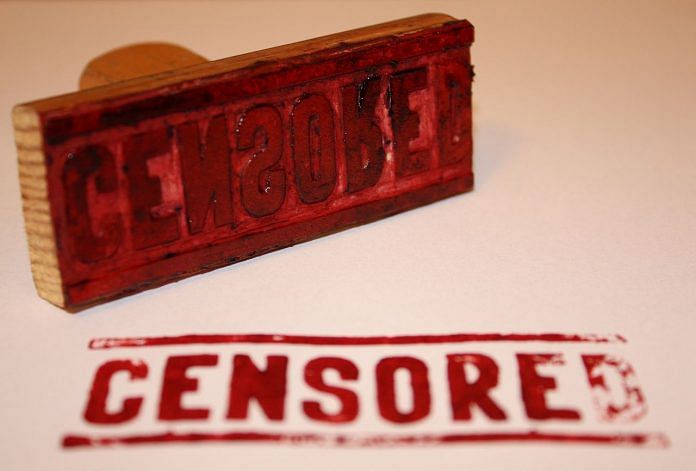However, censorship and certification before the release of a film isn’t necessarily against the right to free speech
Over the years, India’s censor board has made some outrageous decisions while approving films for public screening. In the 1970s, it was responsible for changing how the iconic Bollywood film Sholayends, with the villain Gabbar Singh being handed over to the police instead of being killed (since the Emergency-era censor board was worried about the protagonist police officer, Thakur Baldev Singh, taking the law into his own hands).
More recently, it cut a kissing scene between Daniel Craig and Monica Bellucci in the James Bond film Spectre. It refused to certify an award-winning film, Lipstick Under My Burkha, partly because it was “lady-oriented”. The chief of the censor board, Pahlaj Nihalani, was recently sacked perhaps on account of the heavy criticism and ridicule which the board came under for these and other decisions.
India follows a system of film censorship which is known, in law, as a “prior restraint”. In 1799, the Governor General of British India Lord Mornington (later known as Lord Wellesley) introduced regulations which said that no newspaper could be published at all until it was previously inspected and approved by the government. These regulations were introduced because the East India Company was worried that newspapers would reveal their troop movements to Tipu Sultan during the ensuing Fourth Mysore War.
In 1823, Raja Rammohan Roy submitted a memorandum to the Supreme Court of Calcutta protesting against the imposition of prior restraints on the press. This form of censorship had long been abolished in England.
Though prior restraints are no longer imposed on the press in India, they continue to be imposed on the film and entertainment industry. Under the Cinematograph Act, 1952, no person can show his film to the public without obtaining a certificate from the censor board.
The board has the power to refuse to sanction a film altogether, to sanction a film for unrestricted public exhibition, for public exhibition restricted to adults or any class of professionals, or even to direct the applicant to carry out such ‘excisions or modifications’ in the film as it thinks necessary.
This regime of film censorship was upheld by the Supreme Court of India in K.A. Abbas’s case. Abbas had made a documentary film, A Tale of Four Cities (1968), which was granted an “A” certificate for viewing only by adults. He challenged the Cinematograph Act as he wanted his film to be viewed by all. The Cambridge-educated Chief Justice Hidayatullah upheld the law on the ground that films had an “instant appeal” and could “stir up emotions more deeply than any other product of art”.
Prior restraints are, for the most part, not imposed on television. In other words, US television shows like The Big Bang Theory and Friends do not need the approval of a censor board in order to be shown on Indian television. However, Indian companies which broadcast content on television censor these shows in order to make them ‘suitable’ for viewing on Indian television.
Producers of content on television are required to follow a ‘programme code’ which is incredibly restrictive. For instance, no programme can be carried in India which offends not merely decency but also ‘good taste’, which has ‘suggestive innuendos and half truths’, which casts ‘aspersions against the integrity of the President of India’, which ‘criticizes . . . any individual’, ‘encourages superstition or blind belief ’, denigrates women or children, or portrays any ethnic, linguistic or regional group as being ‘snobbish’ or ‘ironical’.
All programmes also have to be ‘suitable for unrestricted public exhibition’. This means that everyone, even an adult, is forced to watch on television what is suitable for children.
A media company which violates this programme code can face serious consequences. Its equipment can be seized by the government, its officers can be criminally prosecuted, and it can altogether be banned from broadcasting content.
The power of the censor board to certify films is not necessarily antithetical to the right to free speech. In the UK, for example, the British Board of Film Classification, exercising statutory powers under the Video Recordings Act, 1984, has in the past refused to certify a documentary film called Terrorists, Killers & Other Wackos, where a man’s face was literally blown away in a firing squad, though he remained alive, and was shown gasping for breath.
Film censorship in the US is mostly carried out in the form of self-regulation by the Motion Picture Association of America which applies a ratings system known as the ‘Classification and Ratings Administration’. It is not mandatory to submit one’s film for certification to this body. However, films that are not rated by this body, or those which receive ratings of ‘NC-17’ have rarely done well at the box office.
In fact, the Shyam Benegal committee in India has recommended that the censor board here should move away from a system of censorship towards one of classification and ratings. The problem with the censor board in India, however, is that it has often made decisions which are very questionable and morally conservative. One hopes that there will be a change in outlook under the leadership of the current chief, Prasoon Joshi.
The writer is an advocate at the Bombay High Court and the author of “Republic of Rhetoric: Free Speech and the Constitution of India (Penguin, 2017)”



